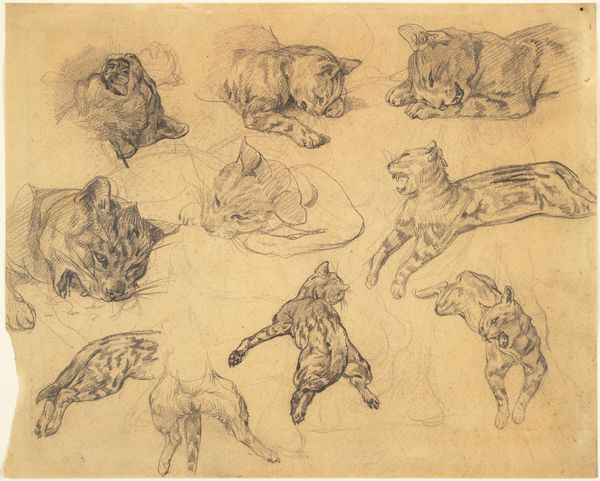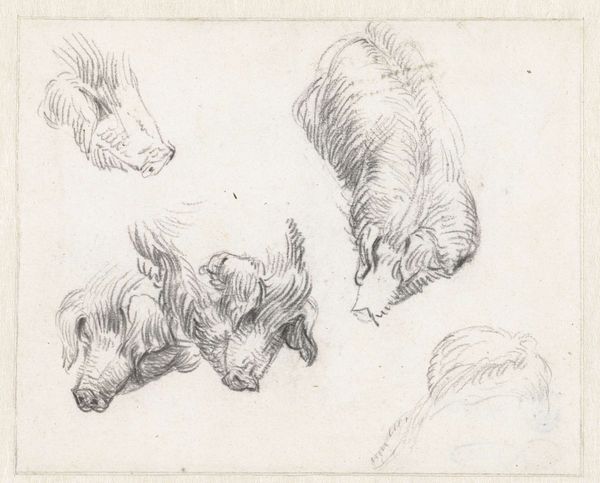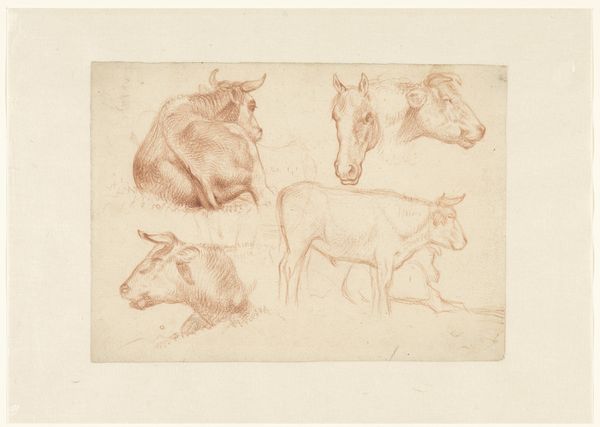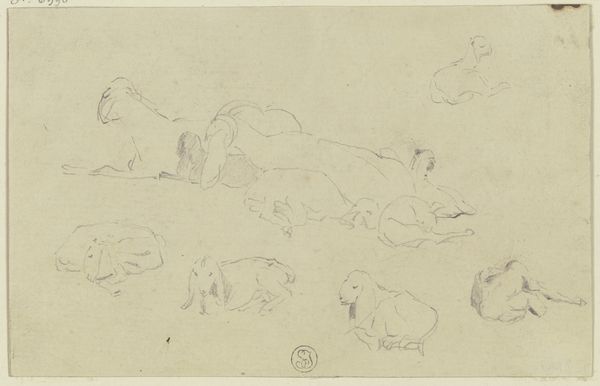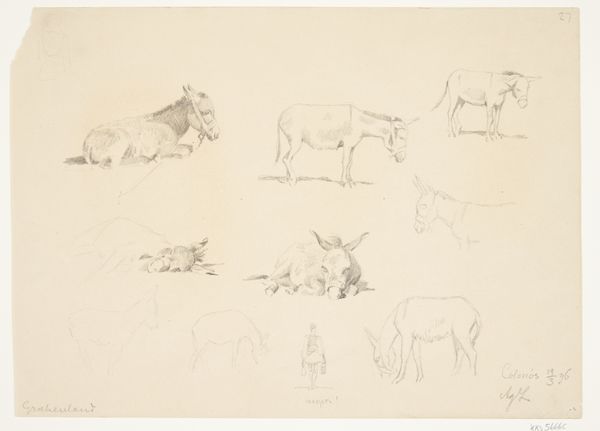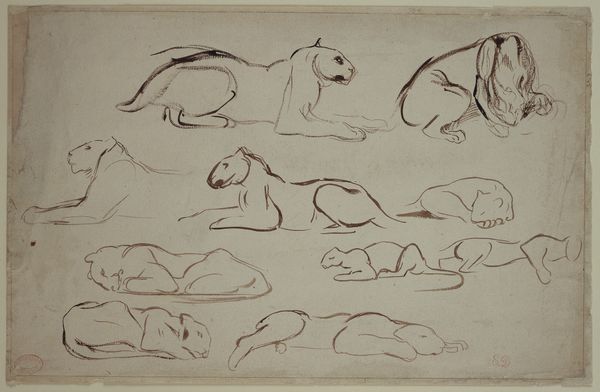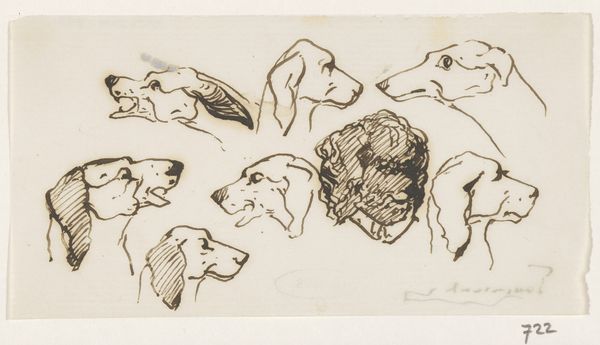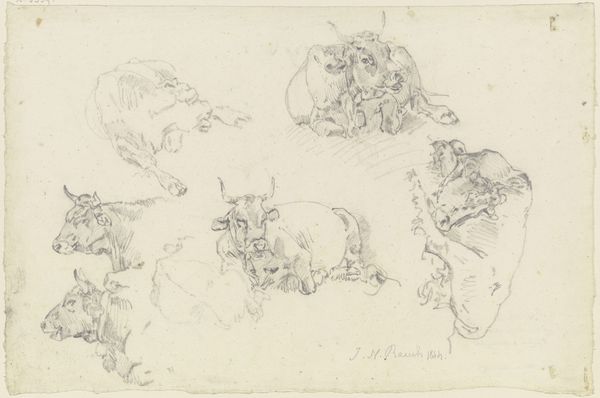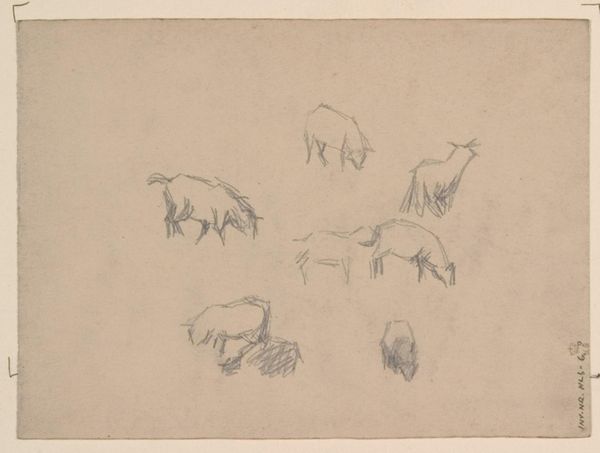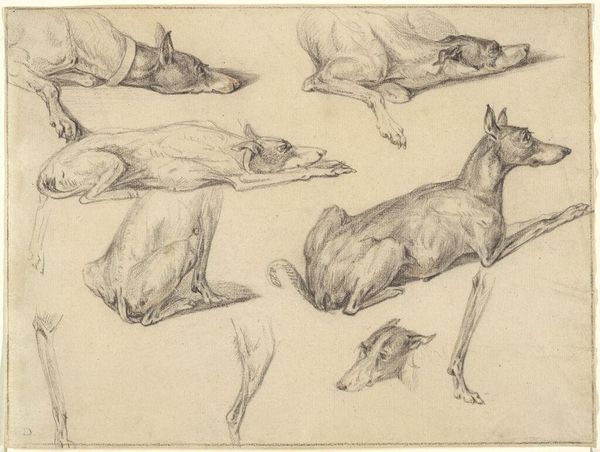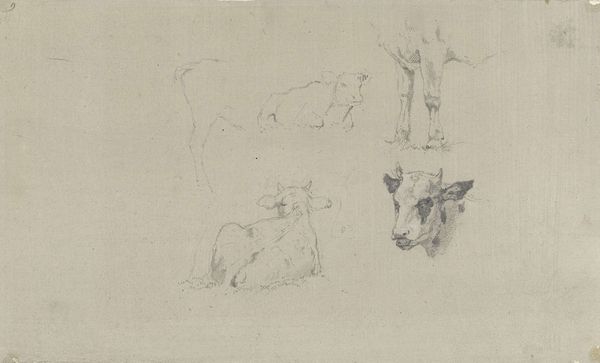
drawing, pencil
#
drawing
#
landscape
#
figuration
#
sketch
#
pencil
#
academic-art
#
realism
Copyright: Public domain
Curator: This is "Studies of Sheep" by James Charles, created in 1863 using pencil. It reminds me of sketchbook pages. What stands out to you? Editor: It's so raw. You can almost see the artist figuring things out as they go. The lines are tentative, like Charles is exploring the sheep's forms. What can you tell me about it? Curator: Let's consider the social context. 1863, think of industrializing England and Victorian notions of labour and the rural. Here, Charles isn’t presenting a finished 'art' object, but something closer to labor itself: the repetitive act of sketching, observing, producing these studies. It invites us to value not just the end product, but the *process* and the conditions surrounding artistic creation. Does it shift your perception of what counts as "art" in that time? Editor: Absolutely. It feels less about idealized beauty and more about…practice. The value shifts from the subject matter, the sheep themselves, to Charles's active engagement with representing them. But weren't academic artists concerned with studies? Curator: Yes, but think about the traditional hierarchy between the sketch and the finished painting, between preparatory studies and 'high art'. Charles seems to disrupt this boundary, inviting us to see inherent worth in the preliminary stage itself. These sketches as 'work'. Consider the cheap, readily available materials – pencil and paper. The drawing lacks refinement because it becomes about the efficient capture and industrial expansion and farming life. The study itself has meaning and reveals aspects of how pastoral settings were transformed at this time. Does this suggest anything new to you about our interaction with objects of art today? Editor: It makes me think about accessibility. An unfinished work feels more approachable, more like something I could conceivably create myself. Maybe the value lies not just in the art itself, but also in how it relates to our labor, or materials, even consumption patterns. Curator: Precisely. Perhaps these "Studies of Sheep" offers something radical, even today: to see the beauty and worth in everyday acts of making and observing. Editor: That makes me see it completely differently. Thank you for offering such fresh ways to see this.
Comments
No comments
Be the first to comment and join the conversation on the ultimate creative platform.

